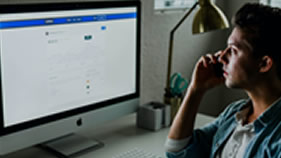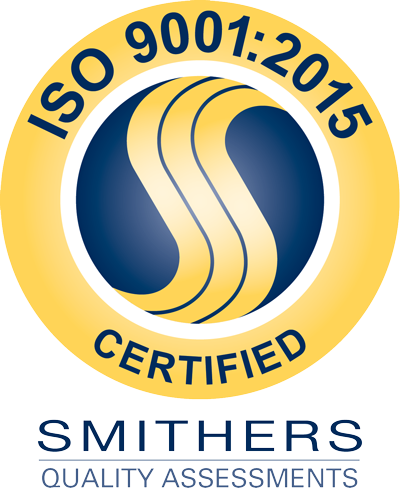Manufacturing and Engineering Translation

Manufacturing and Engineering Expertise
Manufacturing and engineering translations play a crucial role in bridging the language gap in the globalized world of industry and technology. As companies expand their operations and reach international markets, accurate and reliable translations from an experienced provider like TrueLanguage become essential for effective communication with clients, suppliers, and partners worldwide. Manufacturing and engineering sectors encompass a wide range of technical and specialized content, including product specifications, assembly instructions, technical manuals, patents, and regulatory documents. Translating these materials requires not only linguistic proficiency but also deep knowledge and understanding of engineering principles, manufacturing processes, and industry-specific terminology.
One of the key challenges in manufacturing and engineering translations is the complex nature of the subject matter. Engineering texts often involve intricate technical concepts, precise measurements, and detailed diagrams. Translators must possess a strong background in engineering to accurately convey the intended meaning while maintaining consistency and clarity. They need to understand the specific terminology and conventions used in different branches of engineering, such as mechanical, electrical, civil, or aerospace engineering. In addition, translators must stay up to date with the latest advancements and industry practices to consistently produce accurate and relevant translations. Even minor errors or mistranslations can lead to significant consequences, including safety hazards, production delays, or costly rework.
Another critical aspect of manufacturing and engineering translations is the need for precision and accuracy. In manufacturing, where efficiency and quality are paramount, precise translations are essential so that instructions, specifications, and standards are correctly interpreted by all stakeholders. Moreover, accurate translations are vital for compliance with international regulations and standards, such as ISO certifications or CE marking.
To achieve high-quality manufacturing and engineering translations, collaboration between translators and subject matter experts is crucial. TrueLanguage translators often work closely with engineers, technical writers, and industry specialists to clarify ambiguous terms, resolve any discrepancies, and verify that the translated content accurately reflects the original meaning. Through this effective collaboration, translations consistently meet the specific requirements and expectations of the target audience, whether they be assembly line workers, maintenance technicians, or design engineers.
Formatting and Layout
Formatting and typesetting in manufacturing and engineering translations are essential components of the translation process. Manufacturing and engineering documents often contain complex technical information, diagrams, tables, and illustrations that require careful formatting for accurate and visually appealing translations. Maintaining the original document’s layout and design is crucial for readability and understanding. Translators must consider factors such as font styles, sizes, spacing, and alignment so that the translated text fits seamlessly into the existing format. Consistency in formatting across different languages is also important for a cohesive and professional appearance.
Typesetting plays a significant role in manufacturing and engineering translations as well, particularly when dealing with technical drawings, blueprints, and diagrams. These visual elements often contain specific symbols, notations, and measurements that need to be accurately reproduced in the target language. Translators must possess a deep understanding of technical drawings and the ability to recreate them with precision, so that the translated versions convey the same information and clarity as the original.
Moreover, the use of computer-aided design (CAD) software is common in manufacturing and engineering industries. Our TrueLanguage translators working with CAD files have the technical knowledge and expertise for utilizing the software properly, guaranteeing that the translated files retain the integrity of the original design. This includes maintaining the correct scaling, layering, and formatting of the CAD files while accurately translating any accompanying text or annotations.
In addition to formatting and typesetting, the translation tools and software we utilize at TrueLanguage greatly enhance the efficiency and consistency of manufacturing and engineering translations. Computer-assisted translation (CAT) tools, for example, can help manage terminology, translation memories, and glossaries, ensuring consistency across different projects and documents. These tools also assist in maintaining consistent formatting and typesetting throughout the translation process.


Glossary and Style Guide
Glossaries and style guides play a crucial role in guaranteeing consistency and accuracy in manufacturing and engineering translations. These resources serve as valuable reference materials for translators, helping them maintain uniform terminology, writing style, and technical conventions throughout the translation process.
Technical terminology in these industries can be highly specialized and industry-specific. A comprehensive glossary provides a list of approved terms, definitions, and translations for key terms relevant to the industry. It helps ensure that consistent terminology is used across different documents and projects, reducing the risk of confusion or ambiguity. Translators refer to the glossary so that they use the correct terminology in their translations, aligning with industry standards and conventions. A well-constructed glossary also improves translation efficiency by reducing the time spent researching and verifying terminology, allowing translators to focus on the linguistic and technical aspects of their work.
In addition to glossaries, style guides are essential tools for maintaining consistency. Style guides establish guidelines for writing style, grammar, punctuation, formatting, and other linguistic aspects of the translation. They provide instructions on how to handle specific language issues and address common challenges encountered in technical translations. For example, a style guide might specify how to handle acronyms, capitalization, or units of measurement. By following a style guide, translators can be certain that their translations adhere to a consistent and professional writing style, reflecting the intended tone and voice of the original document.
Glossaries and style guides are often developed and maintained in close collaboration with subject matter experts, engineers, and technical writers. These professionals contribute their knowledge and expertise to create accurate and industry-specific resources. Regular updates and revisions are necessary to incorporate new terminology, address emerging trends, and reflect changes in industry standards. Through this collaborative approach, glossaries and style guides remain relevant and up-to-date, serving as valuable references for translators and promoting consistency.
There is also the question of localization versus generalization. At TrueLanguage, we offer specific direction and guidance in accordance with our proprietary LocalVoice™ and TrueGlobal™ processes.
Want to know more about our glossary and style guide creation process? We have additional online content that provides more detailed information about our approach and methodology. These additional resources are available here: Glossary and Style Guide Resources
Manufacturing and engineering translations play a vital role in the globalized landscape of industry and technology. TrueLanguage has the experience and expertise to help.

In Country Review
In-country review by native subject matter experts guarantees fulfillment of local standards and satisfaction of all criteria for distribution. Let it guide your approach to new markets.

Quality Management
Our end-to-end quality management process monitors your translations at every step. And our language portal can provide 24/7 access to your projects, project manager, documents, and budget.

Subject Matter Expertise
Our language professionals include subject matter experts in medical and scientific disciplines such as academics, clinical medicine, occupational health and safety, nursing, testing, and others.
Supported Systems


Supported Software: Adobe Acrobat, Adobe FrameMaker, Adobe Illustrator, Adobe ImageReady, Adobe InDesign, Adobe PageMaker, Adobe Photoshop, QuarkXPress US, QuarkXPress Passport
Sample File Types: HTML, XHTML, XML, JAVA, FLASH, CSS, ASP, .NET, Flash, Web 2.0, AJAX, CMS, PHP/MySQL, Linux, Unix

FREE DOWNLOAD: Guide to Document Translation.
Learn about what to expect from your translation partner.
Let’s do this together!
You create the site, the manuals, instructions for use, technical specifications, permits and licenses, warning labels, catalogs, etc. – we translate and localize your materials. What can we translate for you?
1355 Terrell Mill Road SE
1476-250
Marietta, Georgia 30067 USA
770.850.1205
